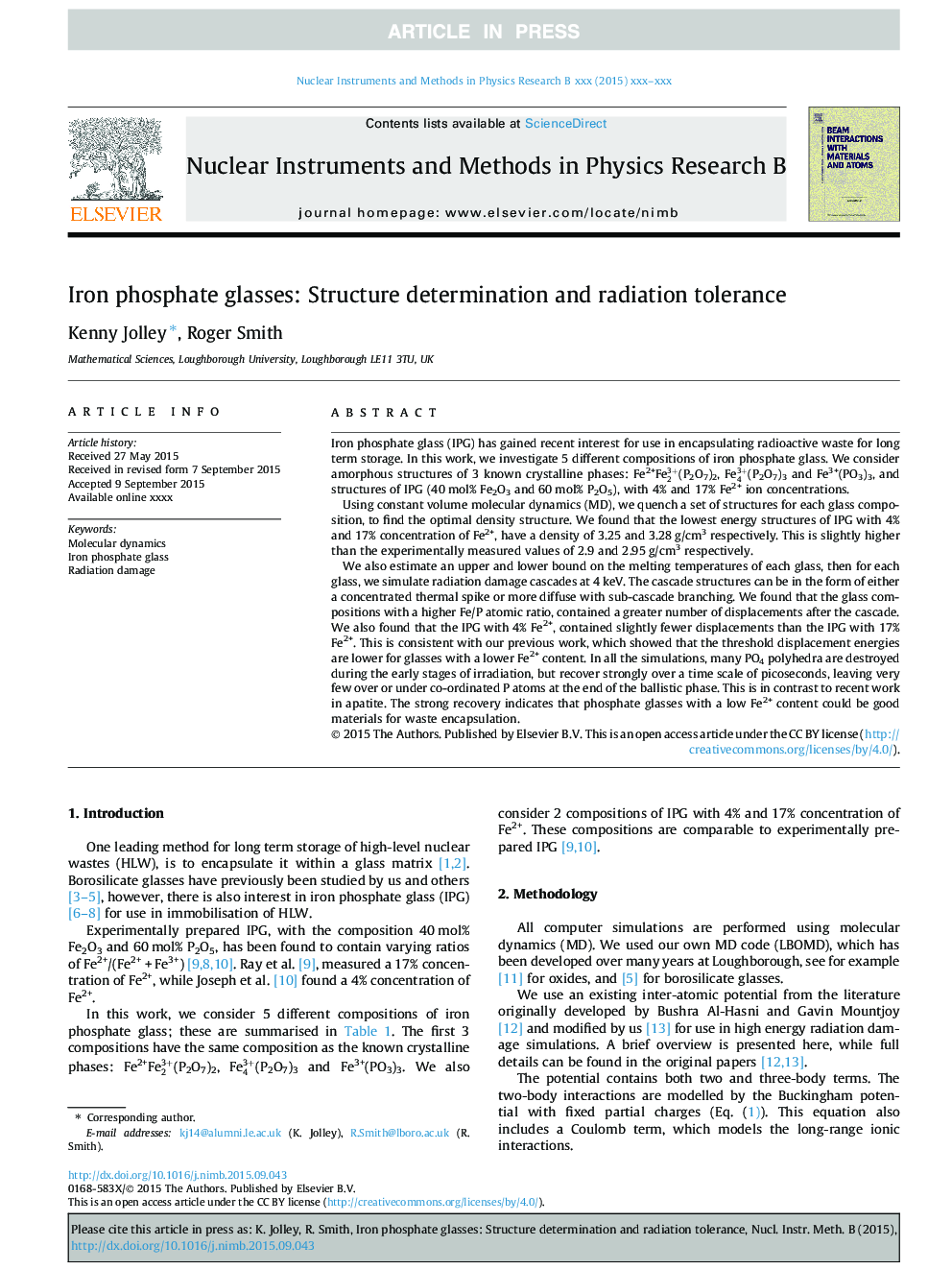| Article ID | Journal | Published Year | Pages | File Type |
|---|---|---|---|---|
| 8039846 | Nuclear Instruments and Methods in Physics Research Section B: Beam Interactions with Materials and Atoms | 2016 | 6 Pages |
Abstract
We also estimate an upper and lower bound on the melting temperatures of each glass, then for each glass, we simulate radiation damage cascades at 4Â keV. The cascade structures can be in the form of either a concentrated thermal spike or more diffuse with sub-cascade branching. We found that the glass compositions with a higher Fe/P atomic ratio, contained a greater number of displacements after the cascade. We also found that the IPG with 4% Fe2+, contained slightly fewer displacements than the IPG with 17% Fe2+. This is consistent with our previous work, which showed that the threshold displacement energies are lower for glasses with a lower Fe2+ content. In all the simulations, many PO4 polyhedra are destroyed during the early stages of irradiation, but recover strongly over a time scale of picoseconds, leaving very few over or under co-ordinated P atoms at the end of the ballistic phase. This is in contrast to recent work in apatite. The strong recovery indicates that phosphate glasses with a low Fe2+ content could be good materials for waste encapsulation.
Related Topics
Physical Sciences and Engineering
Materials Science
Surfaces, Coatings and Films
Authors
Kenny Jolley, Roger Smith,
